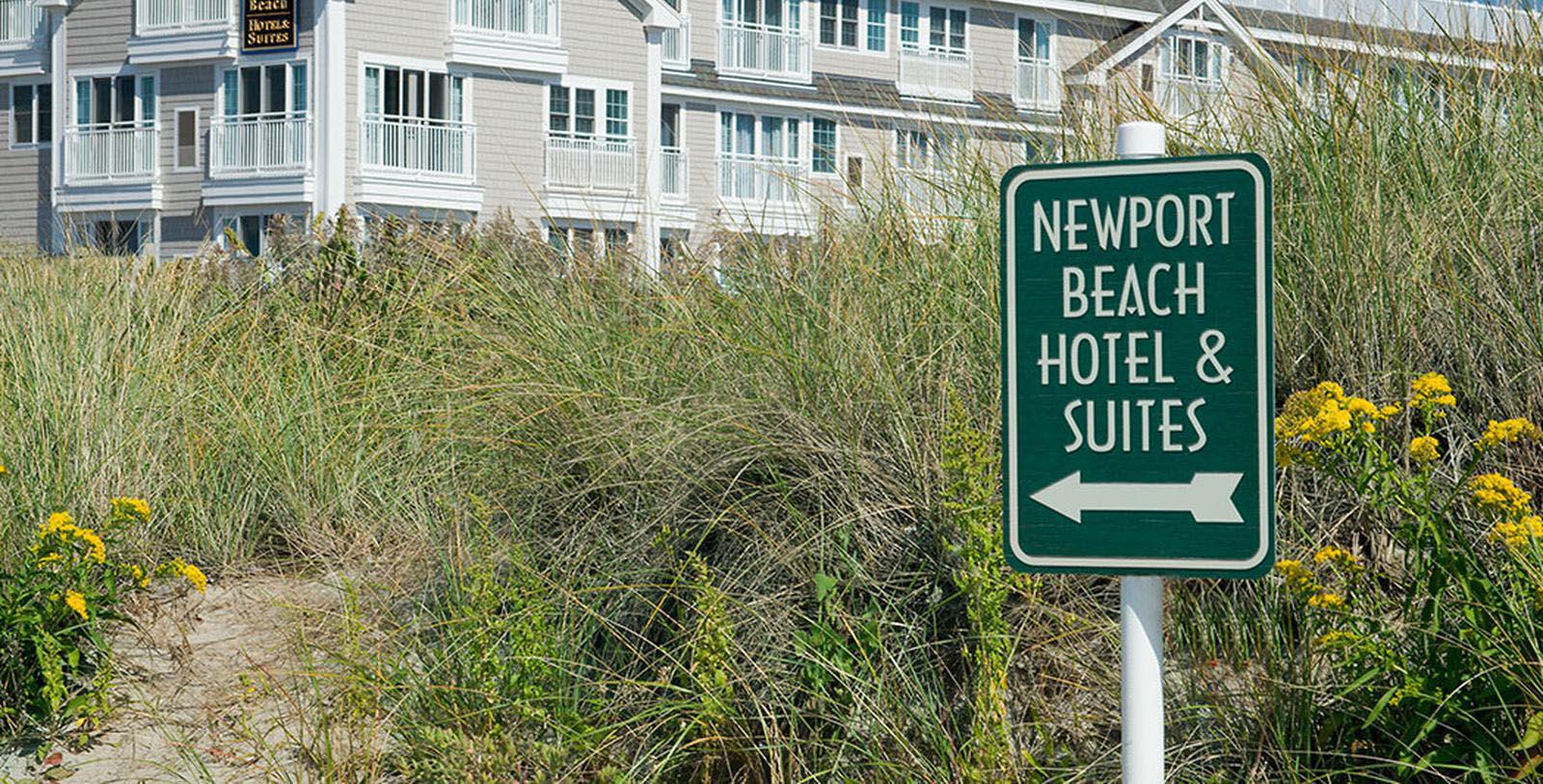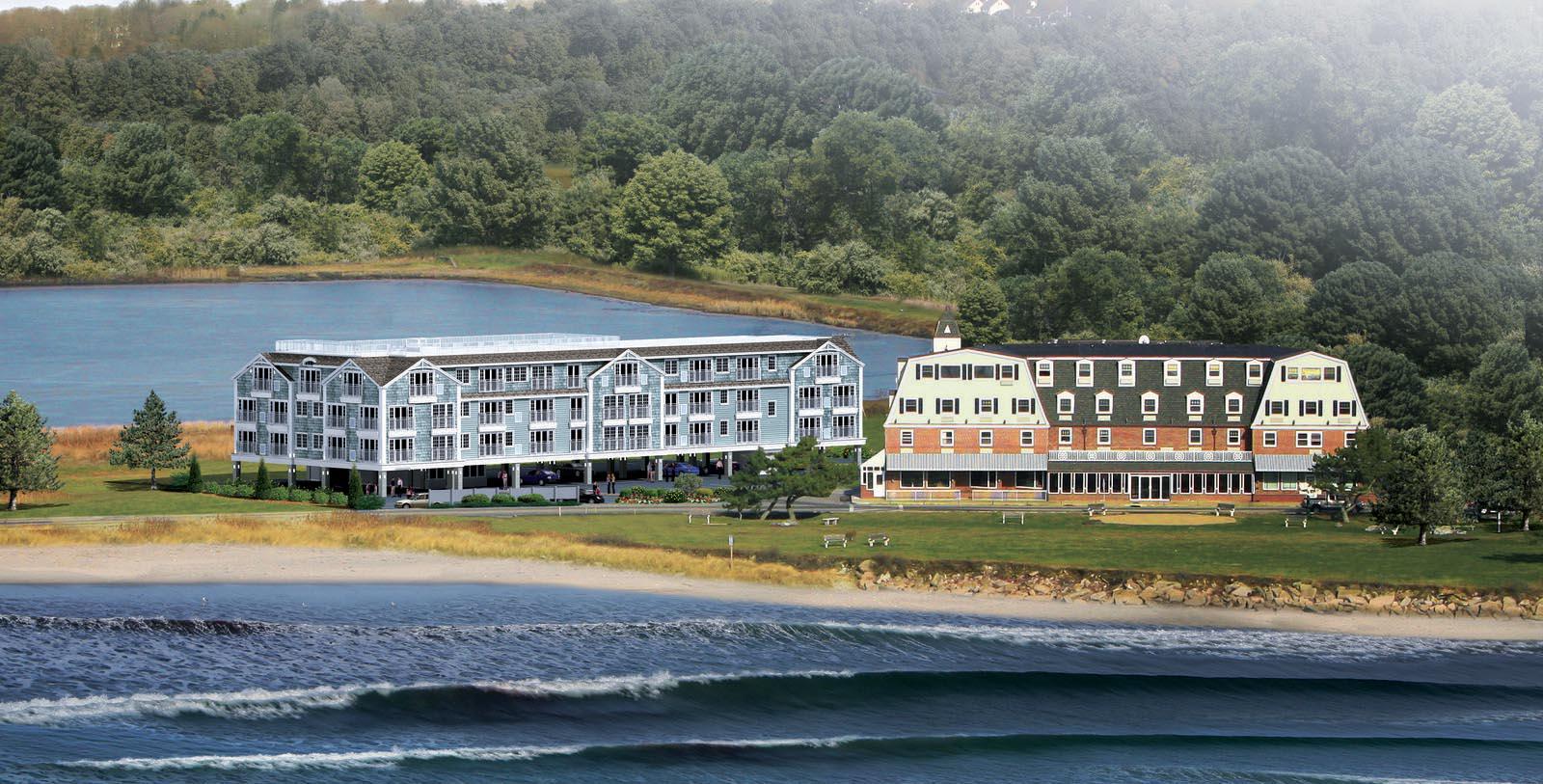Receive for Free - Discover & Explore eNewsletter monthly with advance notice of special offers, packages, and insider savings from 10% - 30% off Best Available Rates at selected hotels.
history
Discover the Newport Beach Hotel & Suites, Newport’s only beach hotel. Modern conveniences are accompanied by panoramic vistas.
Newport Beach Hotel & Suites, a member of Historic Hotels of America since 2000, dates back to 1940.
VIEW TIMELINEBy the dawn of the 20th century, Middletown, Rhode Island—and the rest of Aquidneck Island—had emerged as one of the most popular holiday destinations in the whole country. Many of the nation’s leading families had created their own magnificent summer homes throughout the area, giving rise to its reputation as a hamlet for the rich and famous. Resorts and hotels subsequently debuted alongside those brilliant estates, too, as part of the region’s transformation into a prominent vacation hotspot. The economic development of Aquidneck Island’s coastline continued unabated for some time until the late 1930s, when The Great New England Hurricane made landfall over the region in 1938. The destruction the storm wrought was catastrophic, as it wiped out countless hotels and resorts throughout the island. While many hoteliers subsequently shuttered their operations for good, one family—the Toppas—decided to return to the coast and revive the local tourism industry. Undeterred by the damage, the Toppa family subsequently developed a brilliant new inn along Middletown’s tranquil shoreline.
Taking some two years to complete, the Toppas developed a magnificent resort complex just 100 feet away from the beautiful cascading waves of Easton Bay. It contained a brilliant array of accommodations, as well as some of the finest Colonial Revival-style architecture around. Now known as the “Newport Beach Hotel & Suites,” the destination is still the only beachfront hotel in town decades later. And after a recent multi-million-dollar renovation, the Newport Beach Hotel & Suites has emerged as a world-renowned vacation retreat. An all-suites addition—with rooms ranging from 600 to 1,300 sq. ft.—was situated next to the original historic hotel. The work also saw the development of an indoor pool, Jacuzzi, rooftop hot tub, exercise room, and spa services, all with panoramic water views. Displays of historic memorabilia are even found throughout the hotel today, preserving its quaint New England charm. Located just one mile to historic downtown and Newport's Bellevue Avenue mansions, the Newport Beach Hotel & Suites has been a member of Historic Hotels of America since 2000.
-
About the Location +
The Newport Beach Hotel & Suites resides along the coastline of Aquidneck Island in the pastoral New England community of Middletown. Middletown itself is just a few miles up the road from Newport, one of America’s most prestigious resort towns. Founded in the 1630s, Newport was once a haven for religious exiles from nearby Massachusetts. Among the first groups expelled followed the great Anne Hutchinson, a preacher who provoked great controversy throughout colonial Boston due to her disagreements over reigning Puritanical doctrine. Seeking refuge elsewhere, Hutchinson and her supporters withdrew to the northern end of Aquidneck Island after conferring with another outcast, Roger Williams. (Williams had been expelled from Massachusetts a few months earlier, fleeing south to Narraganset Bay where he founded the settlement of “Providence.”) Hutchinson’s Puritans quickly founded the town of Portsmouth, before splintering into two separate sects. Led by William Coddington and Nicholas Easton, the new group eventually moved toward the southern tip of the island to a clearing occupied by a local band of Native Americans. They then negotiated its acquisition and developed Newport upon the site just a short time later. Interestingly, Newport grew quite differently than its neighbors over the next several decades, for its founders decided to operate the town around the premise of spiritual tolerance. As such, Newport fostered a democratic culture that attracted people of many different creeds from Jews to Quakers.
The flood of immigrants into Newport caused its population to swell considerably, making it one of the largest settlements in Rhode Island by the end of the century. This deluge of people also introduced a wave of new industries into Newport, greatly diversifying its local economy. While trades of all flavors emerged in Newport, perhaps the greatest to appear was shipping. Merchants and sailors transported countless goods across the Atlantic, such as furniture, fish, and rum. In consequence, dozens of new warehouses and wharves subsequently debuted throughout Newport’s waterfront, making the town one of the greatest harbors in the “New World.” Wealth flowed into Newport unlike ever before, giving rise to numerous neighborhoods filled with many ornate residences and municipal structures. (Many of those buildings still survive today and are even listed in the U.S. National Register of Historic Places.) But this transoceanic commercial activity had a darker side to it, for a fair amount of human chattel were often shipped through Newport’s harbor—a practice that would sadly remain active until the early 1800s. Nevertheless, Newport’s reliance on maritime trade greatly affected its local politics, making the city a hotbed for revolutionary sentiment following its regulation by British Parliament in the mid-18th century. This anger—combined with the port’s prosperity—eventually made it a British military target once the American Revolutionary War finally broke out. The British stubbornly garrisoned the town for the duration of the conflict, too, only leaving after the French landed forces nearby at the start of the climatic Yorktown campaign.
The following century proved to be less kind to Newport, as other cities gradually surpassed it as a both seaport and manufacturing center. Nevertheless, its natural harbor still made it a desirable place for recreational boating for years to come. The harbor even attracted the likes of the nascent U.S. Navy, which established major facilities like the Naval War College inside Newport by the eve of the American Civil War. Still, with the loss of its earlier economic dominance, the people of Newport sought to reinvent the city’s identity. As such, they used its unique colonial character to transform it into a tranquil seaside resort community. At first, influential intellectuals—such as Julia Ward Howe, Thomas Wentworth Higginson, and William Ellery Channing—flocked into the reborn Newport to find inspiration. But by the height of the Gilded Age, some of America’s most powerful individuals had traveled to the city for their summer vacations. Brilliant mansions quickly proliferated throughout Newport, which were occupied by prevalent families like the Griswolds, the Astors, and the Vanderbilts. Some of the best architects in the nation worked on the structures, too, including Richard Morris Hunt and the team at McKim, Mead, and White. A few of the towering estates—like The Breakers, The Elms, and Miramar—even became celebrated national landmarks, due to their spectacular architectural appearance. Newport maintained its reputation as a prestigious vacation town for generations thereafter, despite a brief economic downturn that affected the city toward the end of the 20th century. In fact, Newport became one of the preferred holiday destinations for President Dwight D. Eisenhower, as well as President John F. Kennedy and First Lady Jacqueline Kennedy Onassis.
-
About the Architecture +
The Newport Beach Hotel & Suites displays some of the finest Colonial Revival architecture in Rhode Island. Colonial Revival architecture itself is perhaps the most widely used building form in the entire United States today. It reached its zenith at the height of the Gilded Age, where countless Americans turned to the aesthetic to celebrate what they feared was America’s disappearing past. The movement came about in the aftermath of the Centennial International Exhibition of 1876, in which people from across the country traveled to Philadelphia, Pennsylvania, to commemorate the American Revolution. Many of the exhibitors chose to display cultural representations of 18th-century America, encouraging millions of people across the country to preserve the nation’s history. Architects were among those inspired, who looked to revitalize the design principles of colonial English and Dutch homes. This gradually gave way to a larger embrace of Georgian and Federal-style architecture, which focused exclusively on the country’s formative years. As such, structures built in the style of Colonial Revival architecture featured such components as pilasters, brickwork, and modest, double-hung windows. Symmetrical designs defined Colonial Revival-style façades, anchored by a central, pedimented front door and simplistic portico. Gable roofs typically topped the buildings, although hipped and gambrel forms were used, as well. This building form remained immensely popular for years until largely petering out in late-20th century. Nevertheless, architects today still rely upon Colonial Revival architecture, using the form to construct all kinds of residential buildings and commercial complexes. Many buildings constructed with Colonial Revival-style architecture are even identified as historical landmarks at the state level, and the U.S. Department of the Interior has even listed a few of them in the U.S. National Register of Historic Places.































